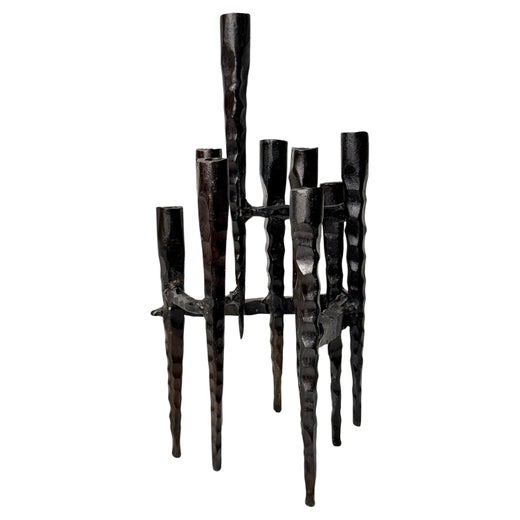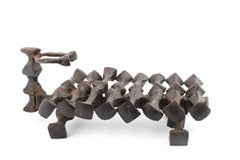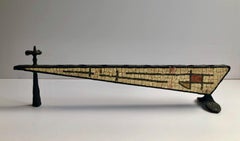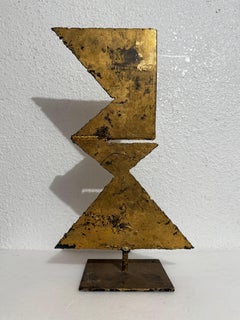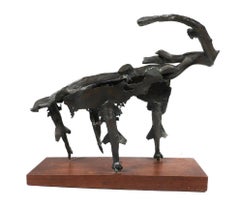David PalomboLarge Modernist Hand Forged Iron Menorah Sculpture Knesset Israeli David Palomboc.1960
c.1960
About the Item
- Creator:David Palombo (1920 - 1966, Israeli)
- Creation Year:c.1960
- Dimensions:Height: 8.25 in (20.96 cm)Width: 18.5 in (46.99 cm)Depth: 9 in (22.86 cm)
- Medium:
- Movement & Style:
- Period:
- Condition:
- Gallery Location:Surfside, FL
- Reference Number:1stDibs: LU3824033082
David Palombo
David Palombo was an Israeli sculptor and painter. He was born in Turkey and immigrated to the Land of Israel with his parents in 1923. In 1940, Palombo began his studies at Bezalel Academy of Arts and Design and from 1942 as a student of sculptor Ze’ev Ben-Zvi. For some time, Palombo was an assistant at Ben-Zvi’s studio and also taught at Bezalel. Work by Palombo is included in the Judaica collection of the Jewish Museum (a well-known Hanukkah menorah). Palombo executed the impressive metal gates of the Tent of Remembrance at the Yad Vashem, the memorial to the martyrs of the holocaust, as well as the gates to the Knesset Building the United Nations Educational Scientific and Cultural Organization awarded him a scholarship for study in Japan.
You May Also Like
21st Century and Contemporary Arte Povera Figurative Sculptures
Marble, Bronze
Mid-20th Century Modern Figurative Sculptures
Iron
2010s Abstract Abstract Sculptures
Stone, Iron
21st Century and Contemporary Abstract Abstract Sculptures
Metal, Silver, Iron
21st Century and Contemporary Abstract Abstract Sculptures
Metal, Iron, Wire
21st Century and Contemporary Abstract Abstract Sculptures
Metal, Iron
21st Century and Contemporary Abstract Figurative Sculptures
Iron, Metal
21st Century and Contemporary Abstract Abstract Sculptures
Metal, Iron, Silver, Copper
2010s Abstract Figurative Sculptures
Iron
2010s Abstract Abstract Sculptures
Stone, Iron
More From This Seller
View AllMid-20th Century Arte Povera Abstract Sculptures
Iron
Mid-20th Century Arte Povera Abstract Sculptures
Stone, Iron
20th Century Modern Abstract Sculptures
Iron, Gold Leaf, Steel
Mid-20th Century Abstract Expressionist Abstract Sculptures
Bronze
20th Century Surrealist Figurative Sculptures
Marble, Bronze
2010s Outsider Art Abstract Sculptures
Bronze
